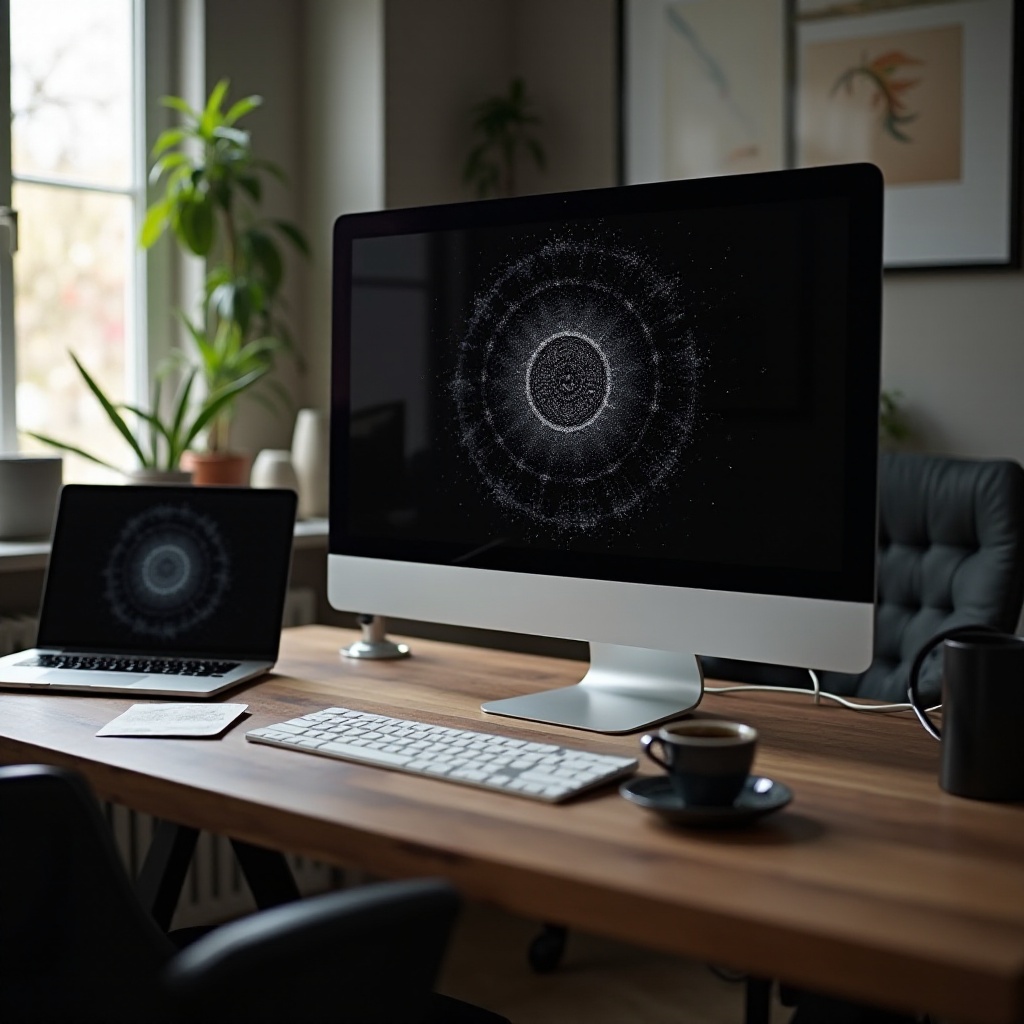Introduction
Encountering a black screen with snow on your external monitor can be frustrating, especially when you’re in the middle of an important task. This issue can arise from a variety of problems ranging from simple connection issues to more complex hardware failures. Understanding the possible causes and learning systematic troubleshooting steps can help you resolve the issue swiftly and prevent it from happening again.

Understanding the Issue
When your external monitor shows a black screen with snow, it usually indicates a signal problem between the computer and the monitor. Snow refers to the static or white noise seen, similar to a TV set with poor reception. The problem could be as straightforward as a loose cable or as complex as a failing graphics card. Knowing the common causes helps in addressing the problem more efficiently.
Common Causes for Black Screen and Snow
Cable and Connection Problems
Loose or damaged cables often cause display issues. HDMI, DisplayPort, or DVI cables, if not securely connected, can lead to signal interruptions.
Graphics Card and Driver Issues
Your graphic card might be malfunctioning or its drivers could be outdated. Additionally, recent driver updates can sometimes cause compatibility issues.
Overheating and Dust Build-up
Overheating components can cause your monitor to display a black screen with snow. Dust build-up in the vents can block airflow and contribute to overheating.
Initial Troubleshooting Steps
Let’s now move on to some initial troubleshooting steps that can help identify and resolve the issue.
Checking Connections and Cables
- Ensure all cables are securely connected.
- Replace cables if they appear worn or damaged.
Testing with Another Device
- Connect the monitor to another computer or device to check if the issue persists.
- If the problem is resolved, the issue likely lies with your original device.
Inspecting for Physical Damage
- Inspect your monitor and cables for any signs of physical damage such as fraying or bent connectors.
- Investigate your computer’s ports for any visible damage.

Software and Driver Fixes
After checking the initial physical connections, software and driver fixes are the next logical step.
Updating Graphics Drivers
- Visit the official website of your graphics card manufacturer.
- Download and install the latest drivers specific to your card model.
Rolling Back Recent Updates
- If the issue started after a driver update, consider rolling back to a previous version.
- Access your system’s Device Manager and select the option to roll back drivers.
Running System Diagnostics
- Use built-in system diagnostic tools to identify any underlying software issues.
- Tools such as Windows’ direct diagnostic (DxDiag) can be useful in pinpointing problems.

Advanced Hardware Inspection
Continuing our systematic approach, let us check for more advanced hardware issues that could be causing the problem.
Checking for Overheating Issues
- Ensure your computer and monitor are adequately ventilated.
- Clean dust from vents and fans to improve airflow.
Power Supply and Stability Testing
- Check if your power supply is working correctly or is underpowered.
- Consider using a power stability tester to ensure the power supply is consistent.
Using Diagnostic Tools for GPU
- Utilize software tools designed to test the health of your GPU.
- Programs like GPU-Z can offer detailed information and run stress tests.
When Replacement is Necessary
In some cases, despite all troubleshooting efforts, you may need to replace your monitor.
Signs Your Monitor Might Need Replacing
- Persistent issues despite troubleshooting.
- Noticeable physical damage or display artifacts.
Choosing a New Monitor
When selecting a replacement, consider:
1. Resolution and refresh rate for the best display quality.
2. Connectivity options that match your device’s capabilities.
3. Reviews and brand reliability.
Preventative Measures
To avoid future occurrences of the issue, let’s look at some preventative measures.
Regular Maintenance Tips
- Regularly clean your monitor and cables to prevent dust build-up.
- Ensure cables are not bent or twisted.
Proper Usage Guidelines
- Avoid placing your monitor in direct sunlight or near heat sources.
- Use a surge protector to prevent damage from electrical spikes.
Downloading Monitor Management Software
- Use software to oversee the health and performance of your monitor.
- Programs like Monitorian can adjust brightness and closely monitor other settings.
Conclusion
Experiencing a black screen with snow on your external monitor can be alarming. By understanding the possible causes and systematically troubleshooting the issue, you can often resolve the problem swiftly. Regular maintenance and timely updates can prevent this issue from reoccurring. If replacements become necessary, making an informed choice about your next monitor ensures a long-lasting and high-quality display experience.
Frequently Asked Questions
Why does my external monitor display a black screen with snow?
The issue often stems from cable connections, hardware failures, or overheating.
How can I tell if it’s a software or hardware issue?
Testing the monitor with another device and checking recent driver updates can help differentiate between software and hardware causes.
What should I do if none of the troubleshooting steps work?
If all steps fail, professional assistance might be necessary, or it may be time to consider replacing your monitor.